Gram of Weed
A Gram of Weed is a unit of measurement used to describe the amount of cannabis flower. It is equivalent to approximately 0.035 ounces (1 Gram of Weed)
Customize your own Half Ounce bundle with the Mix & Match.
This bundle is great for customers who want to try multiple strains from our premium selections.
- Pick two strains (7 Grams each) to build your Half Ounce
- You must pick two (2) different strains.
$200.00 Original price was: $200.00.$150.00Current price is: $150.00.
In Stock
Description
A gram of weed is one of the most common units of measurement for cannabis. It is equivalent to 0.035 ounces or 28.35 grams. A gram of marijuana can vary in price, quality, and potency depending on several factors such as strain, location, legality, and supply and demand. In this article, we will explore what a gram of weed is, how to measure it, how to convert it to ounces, how much it costs, and the benefits and challenges of buying weed in grams. We will also share tips on finding the best weed deals and how long a gram can last, depending on your consumption method and frequency.
Table of Contents
ToggleWhat is a Gram of Weed?
A gram of weed is a weight unit commonly used to measure cannabis. You can buy the smallest weed from a dispensary or a dealer. One gram of weed is usually enough for one or two joints, depending on how you roll them. A gram of weed can also make edibles, tinctures, oils, or concentrates.
Common Names for a Gram of Weed
A gram of weed has many slang terms and nicknames that vary by region and culture. Some of the most popular ones are:
- A dime bag: This term refers to a gram of weed that costs $10. However, this price may not be accurate in some areas where weed is more expensive or cheaper.
- A dub: This term refers to a gram of marijuana that costs $20. Again, this price may not be accurate in some areas where weed is more expensive or cheaper.
- A g: This term is simply an abbreviation for a gram.
- A jib is derived from the French word “gibier,” which means”game or”prey. It implies that 1 gram of weed is something valuable or desirable.
- A stick: This term refers to a joint rolled with 1 gram of weed.
Measuring a Gram of Marijuana
The best way to measure a gram of marijuana is to use a digital scale that can weigh in grams. You can find these scales online or at some head shops. To measure a gram of marijuana, you need to:
- Please turn on the scale and make sure it is set to grams.
- Place an empty container or a piece of paper on the scale and press the tare button to zero out the weight.
- Put your weed on the container or paper and check the weight on the scale. It should read 1.0 grams or close to it.
- If the weight is too high or too low, adjust the amount of weed accordingly until you get 1.0 grams.
Ounces vs. Grams of Weed
Ounces and grams are both units of weight that can be used to measure weed. However, they are not equivalent and have different conversions. Here are some facts about ounces and grams of weed:
- An ounce of weed is equal to 28.35 grams of weed.
- A gram of weed is equivalent to 0.035 ounces of weed.
- An ounce of weed is usually divided into eight parts called eighths, equal to 3.5 grams each.
- A quarter ounce of weed is equal to 7 grams of weed.
- A half ounce of weed is equal to 14 grams of weed.
How to convert ounces of weed to grams?
To convert ounces of weed to grams, multiply the number of ounces by 28.35. For example, if you have 2 ounces of weed, multiply two by 28.35 to get 56.7 grams.
To convert grams of weed to ounces, you need to divide the number of grams by 28.35. For example, if you have 10 grams of weed, you must divide ten by 28.35 to get 0.35 ounces.
You can also easily use online calculators or converters to convert ounces of weed to grams or vice versa.
Factors Affecting the Price of Weed
The price of weed can vary significantly depending on factors such as quality, strain, location, legality, and supply and demand. Here are some details about each factor:
Quality
Quality refers to the weed’s potency, appearance aroma, flavor, and freshness. High-quality weed usually has higher levels of THC (the primary psychoactive compound in cannabis) and other cannabinoids (the chemical compounds that produce various effects in cannabis). High-quality weed also looks more appealing with dense buds covered in trichomes (the tiny crystals that contain THC and other cannabinoids). High-quality weed also smells
strong and pleasant, with hints of flavors such as citrus, pine, or diesel. High-quality weed also tastes better and smoother when smoked or vaped. High-quality weed is usually more expensive than low-quality because it is more potent and enjoyable.
Strain
Strain refers to the specific variety of cannabis bred with certain characteristics such as effects, flavors, aromas, and colors. There are hundreds of different strains of cannabis, each with its unique profile and properties. Some of the most popular strains are:
- Indica: This strain type is known for its relaxing, sedating, and pain-relieving effects. It is ideal for nighttime use or treating insomnia, anxiety, stress, and chronic pain. Indica strains usually have a higher ratio of CBD (the non-psychoactive compound in cannabis with medical benefits) to THC. Indica strains typically have a sweet, earthy, or skunky smell and taste.
- Sativa: This strain type is known for its uplifting, energizing, and creative effects. It is ideal for daytime use or treating depression, fatigue, mood disorders, and ADHD. Sativa strains usually have a higher ratio of THC to CBD. Sativa strains typically have a citrusy, fruity, or spicy smell and taste.
- Hybrid: This type of strain is a cross between indica and sativa strains, resulting in a balanced mix of effects. Hybrid strains can be either indica-dominant or sativa-dominant, depending on the ratio of the parent strains. Hybrid strains usually have a variety of smells and tastes depending on the combination of the parent strains.
The price of weed can vary depending on the strain because some strains are more rare, famous, or in demand than others. Some strains are more difficult or costly to grow than others because they require specific conditions or equipment.
Location
Location refers to the area where the weed is grown, sold, or consumed. The price of weed can vary depending on the location because of factors such as:
- Climate: The climate affects the quality and quantity of the weed that can be grown in a particular area. For example, areas with warm and sunny climates are more suitable for growing weed than areas with cold and cloudy climates. Therefore, weed grown in warmer climates may be cheaper than in colder climates because it is easier and cheaper to produce.
- Cost of living: The cost of living affects the expenses involved in growing, distributing, and selling weed in a particular area. For example, areas with high costs of living, such as big cities may have higher prices for weed than areas with low costs of living such as rural areas, because it is more expensive to operate in those areas.
- Competition: Competition affects the supply and demand of weed in a particular area. For example, areas with many growers, sellers, or consumers may have lower prices for weed than areas with few growers, sellers, or consumers because there is more or less availability and demand for weed in those areas.
Legality
Legality refers to the legal status of weed in a particular area. The price of weed can vary depending on the legality because of factors such as:
- Taxes: Taxes affect the final price of legal weed sold in a particular area. For example, areas with high taxes on weed, such as California, may have higher prices than areas with low taxes on weed, such as Oregon, because the taxes are added to the base price of the weed.
- Regulations: Regulations affect the quality and safety of weed sold legally in a particular area. For example, areas with strict regulations on weed, like Colorado may have higher quality and safer weed than areas with lax regulations on weed, such as Nevada, because the regulations ensure that the weed is tested and labeled correctly.
- Risks: Risks affect the price of illegal weed sold in a particular area. For example, areas with harsh penalties for weed, such as Texas, may have higher prices than areas with lenient penalties for weed, such as Massachusetts because the risks involved in growing, distributing, and selling weed are higher in those areas.
Supply and Demand
Supply and demand refer to the amount of weed that is available and wanted in a certain area. The price of weed can vary depending on the supply and demand because of factors such as:
- Seasonality: Seasonality affects the availability and quality of weed in a certain area. For example, areas with outdoor growing seasons such as California may have more availability and better quality of weed during the harvest season than during the off-season because there is more fresh and potent weed in the market.
- Trends: Trends affect the popularity and demand of weed in a certain area. For example, areas with new or trendy strains of weed such as Girl Scout Cookies or Blue Dream may have higher demand and prices for those strains than areas with old or common strains of weed such as OG Kush or Sour Diesel because those strains are more sought-after and hyped-up by consumers.
- Events: Events affect the demand and consumption of weed in a certain area. For example, areas with festivals, concerts, or holidays such as Coachella, 4/20, or Halloween may have higher demand and consumption of weed than areas with no special events because those events attract more people who want to enjoy or celebrate with weed.
How much does a Gram of Weed Cost?
The cost of a gram of weed can range from $5 to $30 depending on the factors mentioned above. However, these are only average prices and they can vary significantly by location and time. Here are some examples of how much a gram of weed can cost in different scenarios:
Legal State
A legal state is a state where the recreational use of weed is legal for adults 21 years or older. Examples of legal states are Alaska, California, Colorado, Illinois, Maine, Massachusetts, Michigan, Nevada, Oregon, Vermont, Washington, and Washington D.C. In a legal state, you can buy a gram of weed from a licensed dispensary or retailer. The average price of a gram of weed in a legal state is around $10 to $15. However, this price can vary depending on the taxes, regulations, quality, and availability of the weed in that state. For example, a gram of weed in California can cost around $12 to $18, while a gram of weed in Oregon can cost around $6 to $10.
Medical State
A medical state is a state where the medical use of weed is legal for patients with qualifying conditions and a doctor’s recommendation of medical states are Arizona, Arkansas, Connecticut, Delaware, Florida, Hawaii, Louisiana, Maryland, Minnesota, Missouri, Montana, New Hampshire, New Jersey, New Mexico, New York, North Dakota, Ohio, Oklahoma, Pennsylvania, Rhode Island, Utah, and West Virginia. In a medical state, you can buy a gram of marijuana from a licensed dispensary or caregiver. The average price of a gram of weed in a medical state is around $10 to $20. However, this price can vary depending on the taxes, regulations, quality, and availability of the weed in that state. For example, a gram of weed in Arizona can cost around $8 to $12, while a gram of weed in New York can cost around $15 to $25.
Black Market
The black market is the illegal market where weed is grown, distributed, and sold without any legal authorization or regulation. The black market exists in every state regardless of the legal status of weed. In the black market, you can buy a gram of weed from a dealer or a friend. The average price of a gram of weed in the black market is around $5 to $10. However, this price can vary depending on the risks, quality, and availability of the weed in that area.
Benefits and Challenges of Buying Weed in Grams
Buying weed in grams has its pros and cons depending on your preferences, needs, and budget. Here are some of the benefits and challenges of buying weed in grams:
Benefits of Buying Weed in Grams
- Affordability: Buying weed in grams is more affordable than buying weed in larger quantities such as ounces or pounds. You can buy a gram of weed for as low as $5 in some areas, which is cheaper than buying a pack of cigarettes or a beer. Buying weed in grams also allows you to save money by only buying what you need and avoiding waste or excess.
- Variety: Buying weed in grams gives you more variety and options to choose from. You can buy different strains of weed and try them out without committing to a large amount. You can also mix and match different strains of weed to create your own blends and effects. Buying weed in grams also allows you to experiment with different consumption methods such as smoking, vaping, or edibles.
- Discretion: Buying weed in grams is more discreet and convenient than buying weed in larger quantities. You can easily carry a gram of weed in your pocket, purse, or backpack without attracting too much attention or suspicion. You can also consume a gram of weed quickly and easily without leaving too much evidence or smell.
Drawbacks of Buying Weed in Grams
- Inconsistency: Buying weed in grams can be inconsistent and unreliable depending on the source and quality of the weed. You may not get the same potency, flavor, or effects from one gram of weed to another. You may also get ripped off or scammed by unscrupulous sellers who may give you less than a gram of weed or low-quality weed.
- Inefficiency: Buying weed in grams can be inefficient and inconvenient if you are a heavy or frequent user of weed. You may have to buy weed more often and spend more time and money on transportation and transactions. You may also run out of weed faster and have to deal with withdrawal symptoms or cravings.
- Unavailability: Buying weed in grams can be difficult or impossible depending on the availability and legality of weed in your area. You may not find any sellers or dispensaries that sell weed in grams or have the strain that you want. You may also face legal risks or consequences if you buy weed in grams from the black market or in an illegal state.
Tips on finding the best Weed Deals
Finding the best weed deals can help you save money, time, and hassle when buying weed. Here are some tips on finding the best weed deals:
- Do your research: Before buying weed, do some research on the prices, quality, and availability of weed in your area. You can use online resources such as Weedmaps, Leafly, or PotGuide to find dispensaries, retailers, or dealers near you and compare their menus, reviews, and deals. You can also ask your friends, family, or fellow consumers for recommendations or referrals.
- Shop around: Don’t settle for the Don’t seller or dispensary that you find. Shop around and compare different options and offers. You may find better prices, quality, or variety from different sources. You may also find discounts, coupons, or specials that can lower the cost of your weed.
- Buy in bulk: If you are a regular or heavy user of weed, you may want to buy weed in bulk instead of grams. Buying weed in bulk can save you money in the long run because you can get a lower price per gram and avoid frequent trips and transactions. You can also store your weed properly and make it last longer. However, buying weed in bulk also has some drawbacks such as higher upfront costs, less variety, and more risks.
- Be flexible: Be flexible and open-minded when buying weed. You may not always find the exact strain or product that you want or need. You may have to compromise or try something new depending on the availability and quality of weed in your area. You may also have to adjust your consumption method or frequency depending on your budget and tolerance.
How long does a Gram of Weed Last?
The duration of a gram of weed depends on several factors such as your consumption method, frequency, tolerance, and metabolism. Here are some estimates of how long a gram of weed can last depending on these factors:
Consumption Method
The consumption method refers to how you ingest or use weed. The most common consumption methods are smoking, vaping, and edibles. The consumption method affects how long a gram of marijuana lasts because it determines how much THC (the main psychoactive compound in cannabis) is absorbed into your bloodstream and how fast it is metabolized by your body. Here are some estimates of how long a gram of weed lasts depending on the consumption method:
- Smoking: Smoking is the most popular and traditional way of consuming weed. Smoking involves burning the weed and inhaling the smoke that contains THC and other cannabinoids. Smoking has a high bioavailability (the percentage of THC that reaches your bloodstream) of around 50% to 60%. Smoking also has a fast onset (the time it takes for the effects to kick in) of around 5 to 10 minutes. Smoking has a short duration (the time the effects last) of around 2 to 3 hours. Therefore, a gram of weed can last for around 2 to 4 joints or bowls when smoked.
- Vaping: Vaping is a newer and more modern way of consuming weed. Vaping involves heating the weed to a certain temperature and inhaling the vapor that contains THC and other cannabinoids. Vaping has a higher bioavailability than smoking around 70% to 80%. Vaping also has a fast onset of around 5 to 10 minutes. Vaping has a longer duration than smoking of around 3 to 4 hours.
Metabolism
The metabolism refers to the rate at which THC (the main psychoactive compound in cannabis) is broken down and eliminated from the body. The metabolism affects how long a gram of weed lasts because it determines how long THC stays in your system and affects you. The metabolism is influenced by several factors such as genetics, body weight, age, gender, diet, exercise, and health. Here are some estimates of how long a gram of weed lasts depending on the metabolism:
- Fast: Fast metabolism users are those who have a high rate of THC breakdown and elimination. Fast metabolism users usually have a low body fat percentage, a young age, a male gender, a healthy diet, and an active lifestyle. Therefore, a gram of weed can last for around 1 to 3 hours when smoked or vaped, or 2 to 6 hours when eaten for fast metabolism users.
- Normal: Normal metabolism users are those who have a normal rate of THC breakdown and elimination. Normal metabolism users usually have a moderate body fat percentage, an average age, either gender, a balanced diet, and a moderate lifestyle. Therefore, a gram of weed can last for around 2 to 4 hours when smoked or vaped, or 4 to 8 hours when eaten for normal metabolism users.
- Slow: Slow metabolism users are those who have a low rate of THC breakdown and elimination. Slow metabolism users usually have a high body fat percentage, an old age, a female gender, an unhealthy diet, and a sedentary lifestyle. Therefore, a gram of weed can last for around 3 to 6 hours when smoked or vaped, or 6 to 12 hours when eaten for slow metabolism users.
FAQ about Grams of Weed
Here are some frequently asked questions and answers about grams of weed:
- How many grams are in an ounce of weed?
There are 28.35 grams in an ounce of weed. - How many grams are in a quarter of weed?
There are 7 grams in a quarter of weed. - How many grams are in a half ounce of weed?
There are 14 grams in a half ounce of weed. - How many grams are in a pound of weed?
There are 453.59 grams in a pound of weed. - How many joints can you roll with a gram of weed?
You can roll around 1 to 2 joints with a gram of weed, depending on how you roll them and how much weed you use per joint. - How many bowls can you pack with a gram of weed?
You can pack around 2 to 4 bowls with a gram of weed, depending on how you pack them and how much weed you use per bowl. - How many edibles can you make with a gram of weed?
You can make around 1 to 2 edibles with a gram of weed, depending on how you make them and how much weed you use per edible.
Conclusion
A gram of weed is one of the most common units of measurement for cannabis. It is equivalent to 0.035 ounces or 28.35 grams. A gram of weed can vary in price, quality, and potency depending on several factors such as strain, location, legality, and supply and demand. A gram of marijuana can also last for different durations depending on your consumption method, frequency, tolerance, and metabolism.
Only logged in customers who have purchased this product may leave a review.
Related products
-
Gorilla Glue #4 Strain for Sale
0 out of 5$300.00 – $1,300.00 Select options This product has multiple variants. The options may be chosen on the product page -
0 out of 5
Sour Watermelon 300mg THC Cubes (Boost Edibles)
0 out of 5$39.00 Add to cart -
Blue Dream Strain
0 out of 5$300.00 – $1,300.00 Select options This product has multiple variants. The options may be chosen on the product page -
Cannatonic Strain for Sale
0 out of 5$290.00 – $1,250.00 Select options This product has multiple variants. The options may be chosen on the product page -
G13 Strain for Sale
0 out of 5$300.00 – $1,300.00 Select options This product has multiple variants. The options may be chosen on the product page -
White Rhino Strain
0 out of 5$300.00 – $1,300.00 Select options This product has multiple variants. The options may be chosen on the product page -
Alien Kush Strain Sale
0 out of 5$300.00 – $1,300.00 Select options This product has multiple variants. The options may be chosen on the product page -
Romulan Strain for Sale
0 out of 5$300.00 – $1,300.00 Select options This product has multiple variants. The options may be chosen on the product page




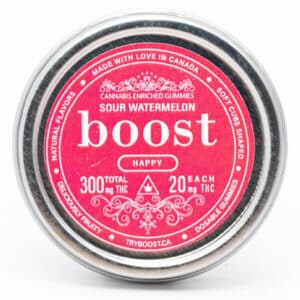




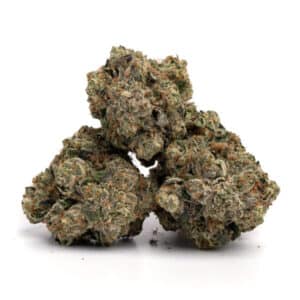
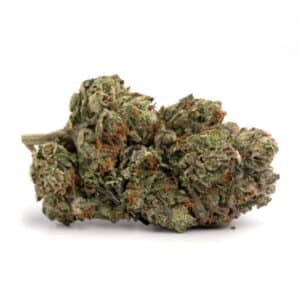
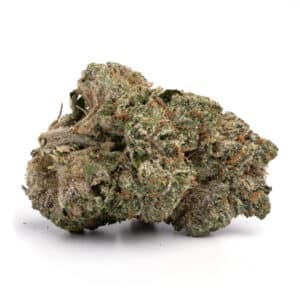

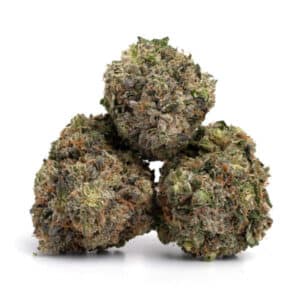
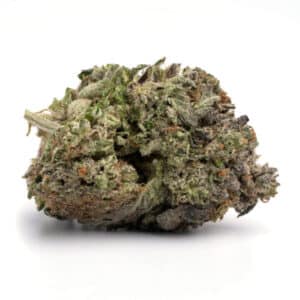
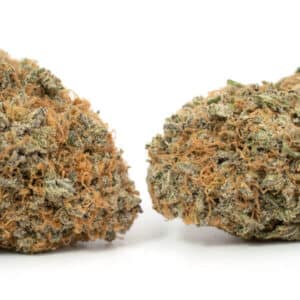
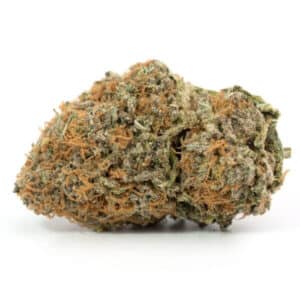

Reviews
There are no reviews yet.